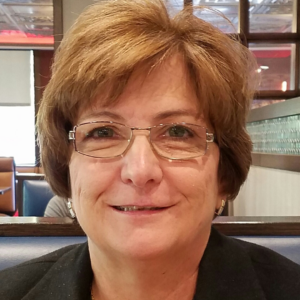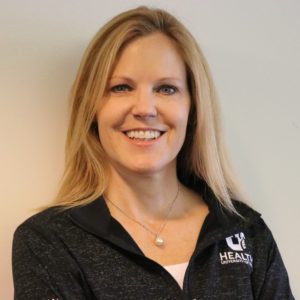Safe and sound
What is the cost of wandering? It depends how you measure it. In terms of risk of harm to the resident and the subsequent concerns of the family, a human cost exists. Your facility also faces a potential cost to its reputation. And a very real monetary cost exists, too.
According to the National Institute for Elopement Prevention and Resolution, 10 percent of all litigation against long-term care (LTC) facilities involves an elopement. The institute also cites figures from commercial property and casualty insurance provider CNA that the average out-of-court settlement for elopement incidents in 2009 was nearly $400,000.
Fortunately, LTC providers have resources available to them to help ensure resident safety, and the technology in the field of wander management continues to evolve to meet the needs of both facilities and residents.
Customizable solutions
The person-centered movement in the LTC industry has led to facilities focusing on the characteristics of each resident and trying to customize protection to each individual if he or she begins showing signs of dementia such as forms of wandering, says Steve Elder, senior marketing manager of Stanley Healthcare in Lincoln, Neb.
“Lockdown units will always be required, because some people reach a state where they really are a danger to themselves,” Elder says. “But many people don’t need that treatment. So rather than a ‘one-size-fits-all approach,’ in which residents are either in a unit or out, providers are looking for ways to tailor the system’s functionality to the individual.”
This need has led to the development of highly programmable software-based solutions in which, for example, a resident accompanied by his or her spouse will be allowed to pass through exits; if the resident is alone, the system will alarm or the door will lock. Certain exits, such as those to courtyards or gardens within a facility, can be programmed to be open at certain times of day but locked at night, providing access to outdoor spaces while maintaining safety.
Another trend Elder cites is an interest in wander management systems at the assisted living level. “Traditionally, wandering was not something that assisted living facilities [ALFs] paid much attention to,” he says. “Now they are, because they have more residents who are showing signs of wandering, yet they still want to keep them.”
Many ALFs, he adds, are looking for solutions that allow them to leverage their current system investment, such as by integrating wander management capabilities into their emergency call systems.
Stanley Healthcare just recently announced a built-in wander management functionality for its Arial emergency call solution, Elder says, “because that’s really what the market was asking for.” In addition, he sees Wi-Fi as a growing platform for future of wander management systems, as it is widespread and widely supported.
ALF applications
At Accutech Security of Franklin, Wis., Marketing Director Chris Konicek also sees the trend toward ALFs being interested in wander management systems.
“[ALFs] are now adding memory care units or allowing residents who have some memory issues to stay,” Konicek says. “Say a husband and a wife come in, and one of them develops early onset dementia. They don't necessarily want to be separated, and the families don't want to move them to a skilled level of care and go through the process of removing them from one another. That is leading to more [ALFs] addressing the elopement question when it arises, instead of just immediately sending the resident to a skilled nursing facility [SNF].”
Other trends driving the market, according to Konicek, are providers’ desire to find a turnkey, integrated solution that includes all resident protection systems, including falls prevention, nurse call, wander management and so on. “Providers want more integration,” he says. “Nobody wants three different computers controlling three different systems.”
In addition, pricing is always a big factor in the decision-making process for SNFs and ALFs, so Accutech is in the process of rolling out a low-cost radio-frequency identification product.
“Our [LS2400] is an ID product that is based on an open-source concept,” Konicek says. “We’re basically eliminating the need for our software, eliminating the need for a computer. We can send our wandering and alarm information out to an existing system—most typically to a facility’s nurse call station. It’s a low price point, and it requires a lot less infrastructure.”
Adding to the growth of the market, Konicek concludes, is the obsolescence of some older systems. Some manufacturers reach a point where they no longer ”support” older systems by producing ID tags or bands for them, which basically forces providers to make upgrades. “Our company has been around for 30 years and has never discontinued support for a system,” he points out.
The right frequency
At ELB Technologies in Hastings, Mich., successful wander management is all about the frequency. CEO Ed Barko explains that, for many years, wander management systems have been plagued by poor performance caused by the unique difficulties inherent in either low-frequency or high-frequency systems.
“The problem with using low frequency on the receiving side is that you pick up a lot of noise,” Barko says. “You have a very low-power transmitter on a body, and you’re trying to transmit a signal with that very low power. You’re asking a receiver to pick up a very weak transmitter signal, and to do so, the receiver must be turned up extremely high. That means the receiver also picks up noise from vacuum cleaners, washing machines, television sets and everything else in the facility. The remedy for that is, the facility needs to invest in filters for all those things.”
The problem with a high-frequency system, on the other hand, can be the difficulty in getting an accurate “fix” on where a resident is in a long hallway, for example, because the higher frequencies use narrower and more directional signals.
According to Barko, ELB Technologies’ AtGuard and AllGuard system combines the best qualities of low frequency and high frequency. The system uses a low-frequency transmitter called an exciter. When a resident enters a field monitored by an exciter, the exciter’s low-frequency signal activates the resident’s wristband, which sends a high-frequency signal to a controller. This capability allows users to get the “field” exactly where they want while eliminating problems with noise. It also allows good flexibility.
“If a customer wants our system to be placed three feet from a door, I can set it three feet from that door,” Barko says. “If they want it to be 30 feet from another door, I can set it 30 feet from that door.” In addition, the wireless, smoke detector-sized exciter can be mounted on the ceiling or, in some cases above it, giving the facility a cleaner, high-end look without wires or wire conduit around the doors.
Better performance
As with most electronic-based industries, wander management will continue to evolve and gain capabilities. These changes will lead to some great opportunities for facilities to “mine” their systems’ data to help them understand changes in resident behavior.
“Many facilities are starting to expect information from their resident safety solutions to help them understand behavior patterns of residents,” Elder says. “Then they’re going beyond that by using the systems for staff tracking, monitoring response times to an incident and so on, so they can improve their performance,” he adds. “They can also look at staffing: ‘What are my busiest times? Are there times when I’m overstaffed or understaffed?’ The more creative facilities are realizing that wandering management systems can be a valuable source of information to help them perform better.”
Wander management resources
- See the “wireless wandering alert systems” section of Long-Term Living’s Buyers Guide (directory.iadvanceseniorcare.com/BuyersGuide.htm?CD=1302).
- The National Institute for Elopement Prevention and Resolution (www.elopement.org) offers The Elopement Issues Workbook: Volume I, Long Term Care, Assisted Living & Group Homes.
- Accutech Security, Franklin, Wis. (www.accutechsecurity.com).
- ELB Technologies, Hastings, Mich. (www.elbtechnologies.com).
- RF Technologies, Brookfield, Wis. (www.rft.com).
- Stanley Healthcare, Lincoln, Neb. (www.stanleyhealthcare.com).
Ron Rajecki is a Cleveland-based freelance writer.
I Advance Senior Care is the industry-leading source for practical, in-depth, business-building, and resident care information for owners, executives, administrators, and directors of nursing at assisted living communities, skilled nursing facilities, post-acute facilities, and continuing care retirement communities. The I Advance Senior Care editorial team and industry experts provide market analysis, strategic direction, policy commentary, clinical best-practices, business management, and technology breakthroughs.
I Advance Senior Care is part of the Institute for the Advancement of Senior Care and published by Plain-English Health Care.
Related Articles
Topics: Articles , Executive Leadership , Technology & IT











